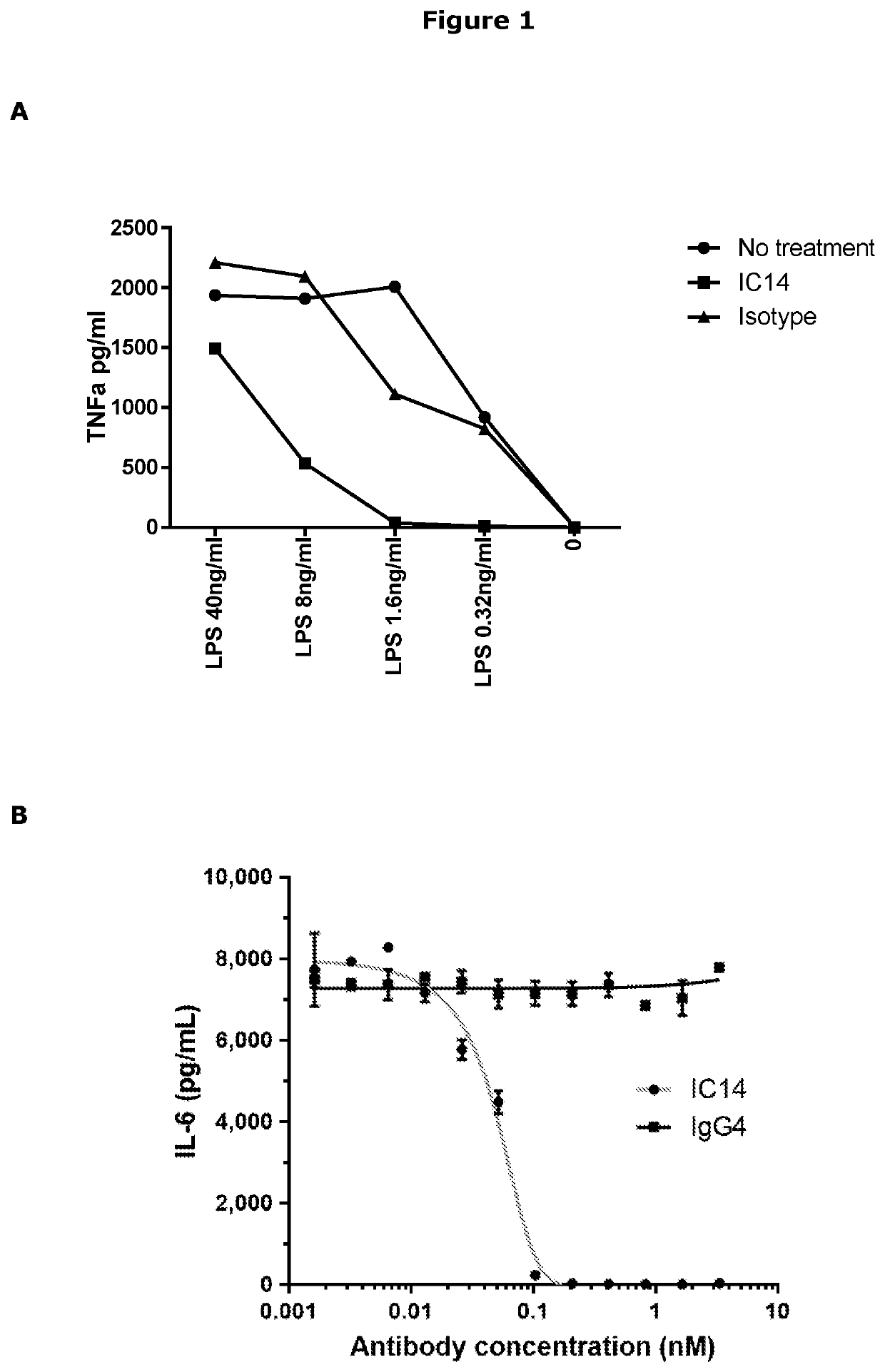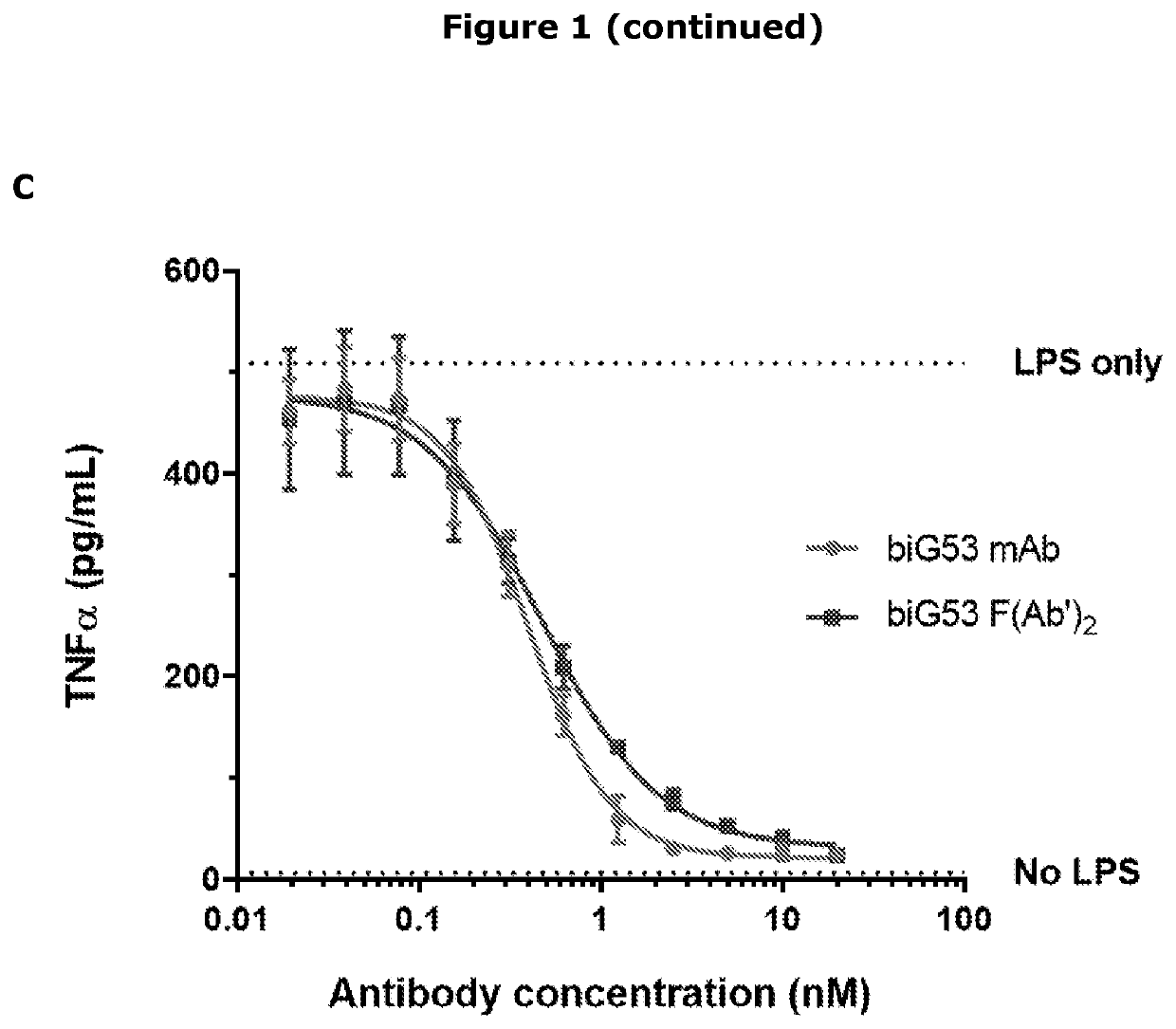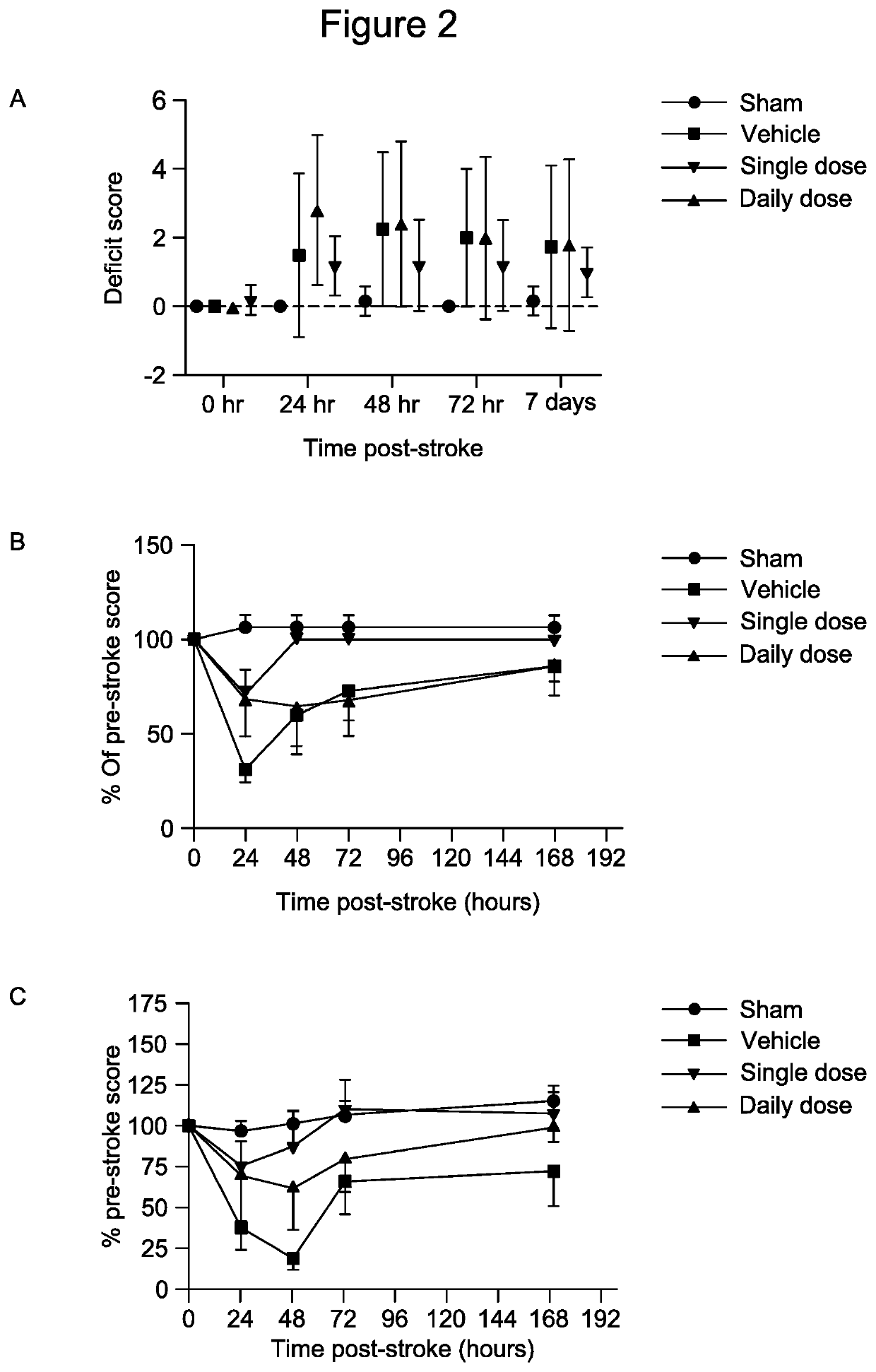Methods and agents for treating acute neuroinflammatory injury
- Summary
- Abstract
- Description
- Claims
- Application Information
AI Technical Summary
Benefits of technology
Problems solved by technology
Method used
Image
Examples
example 1
Material and Methods
CD14 Antagonist Antibody
[0132]The active agent used in the studies was a F(Ab′)2 fragment of mouse anti-mouse CD14 mAb (biG53) that is commercially available. The biG53 F(Ab′)2 antibody was chosen as the best surrogate for the anti-human CD14 mAb (IC14) currently used in human and in vitro studies. IC14 blocks PAMP and DAMP-dependent cytokine production in healthy human subjects and in human microglia / monocytes in vitro (FIG. 1). The species specificity of IC14 is restricted to human, nonhuman primate, and porcine CD14, limiting its utility in rodents. Therefore, a surrogate antibody the F(Ab′)2 fragment of the biG53 anti-mouse CD14 was manufactured. This reagent has a low endotoxin / azide-free formulation, is not immunogenic in mice, and lacks the Fc domain that mediates antibody and complement dependent cytotoxicity reflecting properties of Implicit Biosciences IC14. It was demonstrated that this anti-CD14 F(Ab′)2 functionally inhibits PAMP-dependent cytokine pr...
example 2
Effect of Treatment with CD14 Antagonist Antibody in Mice with MCAO
[0139]Mice with MCAO subsequently treated with the CD14 antagonist antibody or vehicle only, were assessed to determine functional decline and neurological deficit, as well as infarct size.
Functional Decline and Neurological Deficit
[0140]As shown in FIG. 2, stroke induced significant functional decline in vehicle treated control mice over 7-days, with peak decline detected at 24 hours using the hang wire test, and at 48 hours using neuroscore and Rota Rod assessments. Notably, functional decline at 24 hours was attenuated in the group of mice administered a single dose of anti-CD14 F(Ab′) at 6 hours post-stroke, with performance in all tests returning to pre-stroke baseline scores and that of surgical sham control animals by 72 hours. Interestingly however, this attenuation of functional decline was not observed in the group of mice given a daily dose of anti-CD14 F(Ab′)2 over 7 days.
[0141]NeuN immunofluo...
PUM
| Property | Measurement | Unit |
|---|---|---|
| Time | aaaaa | aaaaa |
| Time | aaaaa | aaaaa |
| Time | aaaaa | aaaaa |
Abstract
Description
Claims
Application Information
 Login to View More
Login to View More - R&D
- Intellectual Property
- Life Sciences
- Materials
- Tech Scout
- Unparalleled Data Quality
- Higher Quality Content
- 60% Fewer Hallucinations
Browse by: Latest US Patents, China's latest patents, Technical Efficacy Thesaurus, Application Domain, Technology Topic, Popular Technical Reports.
© 2025 PatSnap. All rights reserved.Legal|Privacy policy|Modern Slavery Act Transparency Statement|Sitemap|About US| Contact US: help@patsnap.com



